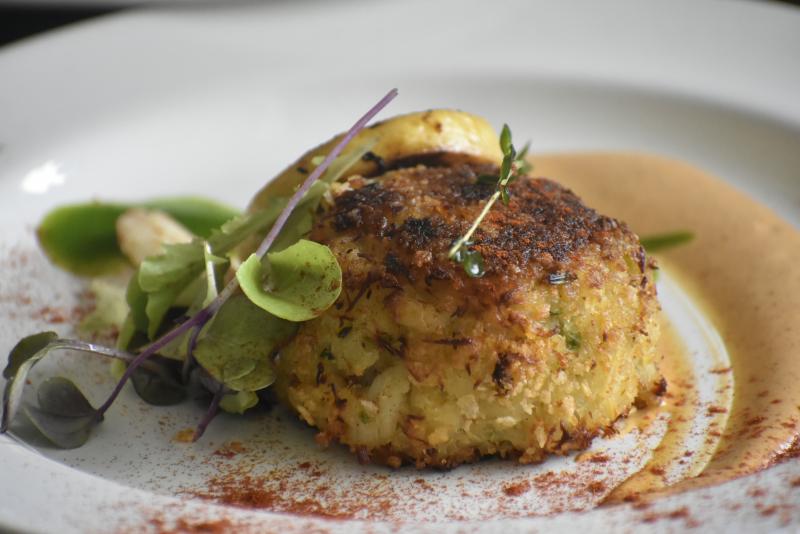
A species of blanket crab photographed by a remotely operated vehicle (ROV) off the coast of Durban, ... [+]
DST/NRF ACEP - Spatial Solutions project teamHermit crabs are best known for using snail shells to protect their fleshy, shell-less bodies. But one group of hermit crabs uses a cozier type of protection: a sea anemone.
These anemone-wearing hermit crabs are collectively known as “blanket hermit crabs” for the adorable way in which they snuggle into their anemone homes. But these anemones are more than just an adorable accessory - they offer serious protection.
The Discovery Of The Blanket Hermit Crab
The first known blanket crab discovery occurred aboard the HMS Challenger in 1874 during a 4-year oceanographic expedition. The voyage collected two blanket crabs while exploring in the Philippines - a male and female of the same species. The crabs were so different from any other crab species known to the scientists on board that their discoverer, J.R. Henderson, assigned the crabs a brand-new genus and species: Paguropsis typicus. The name was changed to P. typica in 1905.

P. typica, the first species of blanket hermit crab to be described by Henderson in 1888.
T-Y ChanWhy Use An Anemone?
While it may seem strange to switch out a hard shell for a soft, gelatinous anemone, these hermit crabs may be more protected than it appears. What the anemone lacks in hardness it makes up for in its stings.
Like the anemone featured in Disney’s Finding Nemo, sea anemones are equipped with the ability to zap other animals. In fact, anemones dish out stings using special anatomy similar to that of a jellyfish, a close relative of the sea anemone.
MORE FOR YOU
How Does The Blanket Hermit Crab Acquire An Anemone?
According to A. Alcock, the scientist who discovered the second species of blanket crab in 1899, “the sea-anemone settles upon the hinder part of the young hermit-crab’s tail, and the two animals grow up together, in such a way that the spreading zoophytes form a blanket which the hermit crab can either draw completely forwards over its head or throw half back, as it pleases.” Rather than acquiring a full-grow adult anemone, blanket hermit crabs acquire their gelatinous protection when a larval anemone lands on the hermit crab’s back.

A species of blanket hermit crab found in the Philippines.
T-Y ChanBlanket hermits crabs have evolved specialized anatomy to hold and stretch the anemone as needed. The crab’s fourth legs, known as their chelate legs, allow blanket hermit crabs to stretch the anemone over their body as if to wrap themselves in a blanket. The anemone species providing the “blankets” for these blanket hermit crabs remain unknown.
How Many Species Of Blanket Crab Are There?
In 2018, research published in ZooKeys found blanket hermit crabs to be much more common than previously thought. The research team, led by Dr. Rafael Lemaitre of the Smithsonian Institute, reviewing hermit crab specimens collected in the Indo-Pacific by various biodiversity campaigns and by assessing historical specimens stored at museums around the world, the scientists were able to describe five new species of blanket hermit crab.
Using each blanket hermit crabs’ anatomy, color, and genetic information, the researchers advanced our understanding of the evolutionary relationship between various species of blanket hermit crab.
There are now a total of seven known species of blanket hermit crab. The largest blanket hermit crab to be described is Paguropsis gigas, which has been reported to nearly 6 inches (15 cm) long when fully stretched out. In their 2018 study, scientists suggest other species of blanket hermit crab remain to be discovered from deep-sea habitats in the Indo-Pacific.
The Link LonkMay 01, 2021 at 10:26AM
https://ift.tt/2QBJXgl
Meet The Hermit Crab Using A Sea Anemone Instead Of A Shell - Forbes
https://ift.tt/2MkGRbk
Crab

No comments:
Post a Comment